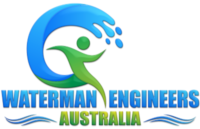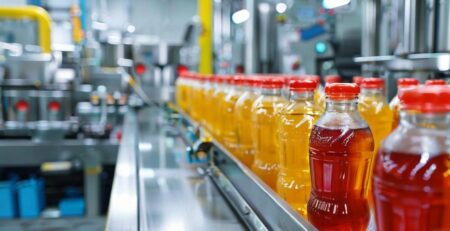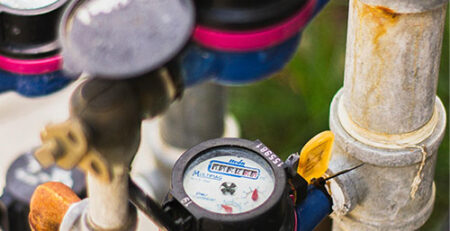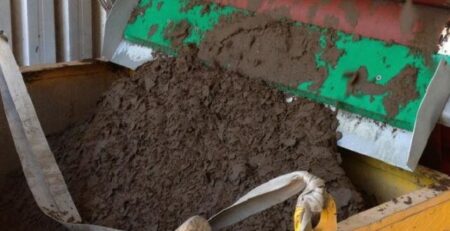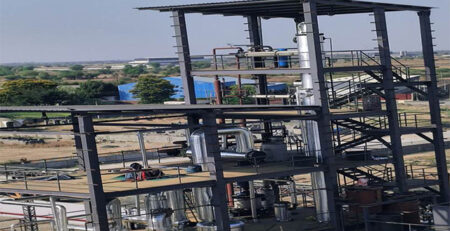Carbon Filtration Plant, Removal of Total Dissolved Organic Compounds In The Food Industry
Carbon Filtration Plant Overview
The process of adsorbing contaminants onto the surface of a filter is known as activated carbon filtration. This approach is effective for removing some organics (undesired flavour and aromas, micro-pollutants), fluoride, chlorine, and radon from potable water or wastewater. Microbial pollutants, nitrates, metals, and other inorganic contaminants, on the other hand, are not affected. Contaminants bind to the surface of activated carbon particles or just become stuck in the minute openings of activated carbon throughout water filtering. Activated carbon filtration is extensively used to generate drinking water in centralized treatment facilities and at the household scale, as well as in industry to treat effluents. It’s also a new method for removing micro-pollutants in both continuous drinking water supply and the purifying of industrial water before to disposal.
The type of activated carbon employed, the water content, and the operating settings all influence adsorption efficiency. Activated carbon filters come in a variety of shapes and sizes to meet the needs of communities, households, and businesses. Activated carbon filters seem to be generally simple to install, but they require energy and professional labour, and they can be expensive owing to the need to replace the filter material on a regular basis.
 Principles of Carbon Filtration Plant
Principles of Carbon Filtration Plant
Adsorptive or reactive filters and particulate filters are the two most common forms of water filters. Particulate filters filter out particles based on their size, whereas adsorptive or reactive filters include a substance (media) that either binds or interacts with a pollutant in water. Adsorption activated carbon works on the same principles like any other adsorbent material. The pollutant is drawn to the surfaces of the carbon granules and kept there (adsorbed). The efficiency of adsorption is influenced by the features of the activated carbon (particle and pore size, surface chemistry, surface area, and so on). The qualities of the chemical contamination are also critical. Less water-soluble compounds are much more prone to be adhered to a solid. The affinity of a specific contaminant with carbon surface is a second characteristic. This affinity is dependent on the charge of the molecule, and it is stronger for molecules with a lower charge. Strong adsorbers will connect to the carbon in huge amounts than those with low adsorption capacity if many chemicals are present in wastewater.
Activated Carbon Preparation
Petroleum coke, lignite, bituminous coal, wood products, peanut shell and coconut shell are common media for activated carbon filters. The carbon medium is “stimulated” by exposing it to a flow (a gas such as water, argon, or nitrogen) and a high temperature (800-1000°C) in the absence of oxygen. To facilitate removal of specific impurities, the carbon may well be subjected to an acidic rinse or be covered with a chemical. Carbon with numerous holes and a large specific surface area is produced by activation. The carbon is subsequently crushed into granular or pulverized form.
Unit Types
Point-of-entry as well as point-of-use activated carbon filters are available. The treatment method, operation, storage capacity, and cost of each activated carbon unit vary. Furthermore, certain devices are more effective than others at treating specific toxins. The kind and amount of the contaminant, as well as the unit’s design, particularly how much carbon it contains, determine which activated carbon device is best for a certain case. Activated carbon systems are classified as follows.
- Pour-Through Units
The simplest type of activated carbon filter is a pour-through appliance, which looks like a drip coffee maker. The processed water can be collected inside a storage container after an amount of unclean wastewater is put through the carbon. These devices are normally placed on the counter and are not linked to the water supply. They’re lightweight, don’t require any setup, and are ideal for camping or picnics. Pour-through machines can only treat a limited volume of water and aren’t as efficient as larger, motorized systems. They’re cheap, but they don’t have enough activated carbon or offer enough contact time in between carbon and the liquid to reliably remove contaminants. The filter material should have been replaced with time to time. Because the carbon in such units can support substantial bacterial growth, they should be cleaned properly after being left inactive for even more than only few days.
- In-Line Device
To purify water to drink or food preparation, the in-line device is put underneath the sink inside the cold-water line. If a single faucet supplies both hot and cold water, treated chilled water may mix with untreated heated water. Only while drinking and cooking with cold water can you be sure you’re drinking and cooking with treated water.
- Faucet Mount Units
Faucet mount units either are fixed to such faucet or put on the counter and connected to it. The bypass version, which features a valve to filter water for drinking or cooking, and the non-bypass alternative, that filters all liquid flowing through the faucets, is the two fundamental designs. These devices really aren’t suggested for the removal of organic pollutants since the amount of carbon included in a faucet-mount device is not significant enough to offer extensive interaction with the water. The filter substance is routinely replenished, just as it is with pour-through devices. Because the carbon in these units can support significant bacterial growth, they should be cleaned properly after being left inactive for more than just few days.
- Line-Bypass Unit
The line-bypass unit is linked to the cold pipe as well, but treated water is given for cooking and drinking via a separate faucet at the sink. A standard tap’s water is untreated. This innovation extends the life of the carbon by allowing a user to select among untreated and treated water depending on the application. The unique faucet design slows flow rate, allowing for more contact time and better absorption. Line-bypass or in-line devices are not recommended for the removal of volatile compounds or radon.
- Treatment at the source (whole-house or point-of-entry)
Whole-house treatment or point-of-entry treatment is prescribed for the management of VOCs, radon, and other pollutants that should be addressed before entering a food industry point-of-entry treatment avoids inhalation and dermal exposure of toxic vapours from the bath, dishwashing, washer, as well as other times whenever large quantities of water are utilised. The pace at which water is administered to the carbon, the time it spends in contact with the carbon, the type of carbon used, and the quantity of contaminant to be removed should all fall within predetermined limits. Point-of-entry devices are positioned where water enters the house and treat all of the water used there. To avoid a build-up of toxic fumes inside the residence, systems should be ventilated to the outside atmosphere. While water can be redirected for outdoor consumption prior to treatment, there really is no bypass option.
Activated Carbon in Cooperation with Other Water Treatment Techniques
Activated carbon is frequently used as a pre-treatment to protect other water treatment units from oxidation or organic fouling, such as ion exchange resins and reverse osmosis membranes. The use of ozonation and activated carbon together is a highly effective method for removing organic debris, including micro-pollutants.
Pros and Cons of Activated Carbon
Pros
- Installing and maintaining the system is simple.
- Can be employed either at the point of entrance (semi-centralized drinking portable water treatment stations, wastewater treatment facilities) or at the point of use (domestic filters).
- Effective for removing organics, chlorine, and radon.
- Using materials that are widely available
Cons
- Filter must be replaced on a regular basis.
- At least periodically, skilled labour is required.
- To select the most appropriate type of activated carbon, a water analysis is necessary.
- Contaminants are removed from the water, but they are not eliminated.
| Principle | The contaminants are separated from the water via adsorption on the activated carbon’s surface |
| Performance | Effective for contaminant with a high affinity for the surface of activated carbon |
| Capacity | Using a simple process and a lot of raw materials; sometimes, skilled labour is required. |
| Costs | The operational cost is lesser. |
| O&M | Carbon cartridges should be replaced or regenerated on a regular basis. |
| Self-help compatibility | To choose the right adsorbent, you must first analyses the water. |
| Main strength | Activated carbon can be made reasonably cheaply almost anywhere in the planet. |
| Reliability | When making decisions regarding of activated carbon to utilize as a filter material, the water composition should be considered. |
| Limitation | The filter must be changed on a routine basis. |
Carbon Filtration Plant Frequently Asked Questions
1) How do you remove dissolved organic carbon?
Different physical and chemical techniques, including chemical coagulation, activated carbon adsorption, ion exchange, advanced oxidation, and biological degradation, can be used to remove DOC from water.
2) How does activated carbon remove chlorine?
Through a catalytic reduction reaction, activated carbon can eliminate and destroy leftover disinfectants (chlorine and chloramine). An electron transfer from the activated carbon surface to the remaining disinfectant occurs during this chemical reaction. Activated carbon thus serves as a reducing agent.
3) Which technique’s is are used for removal of dissolved organics?
For the high-quality removal of dissolved organic contaminants, such as colours, from industrial wastewater, adsorption techniques are used.
4) Can carbon based water filters remove dissolved ions?
Minerals or TDS (Total Dissolved Solids), which is a common measurement used by water filter salespeople, are typically not reduced by activated carbon water filters.
5) Which treatment is effective to remove dissolved pollutants?
The removal or treatment of ECs from wastewater or water sources is thought to be effectively accomplished using a variety of remediation techniques, including adsorption technology, membrane technology, biological treatment, and advanced oxidation technologies.
